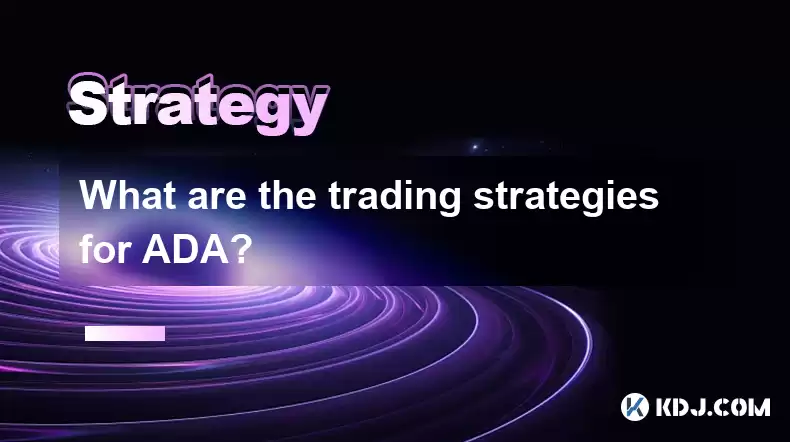-
 Bitcoin
Bitcoin $115100
1.27% -
 Ethereum
Ethereum $3675
2.71% -
 XRP
XRP $2.995
1.45% -
 Tether USDt
Tether USDt $1.000
0.02% -
 BNB
BNB $769.8
2.64% -
 Solana
Solana $168.0
3.25% -
 USDC
USDC $0.9999
-0.01% -
 TRON
TRON $0.3371
1.48% -
 Dogecoin
Dogecoin $0.2051
3.36% -
 Cardano
Cardano $0.7394
2.30% -
 Hyperliquid
Hyperliquid $38.15
0.42% -
 Stellar
Stellar $0.3966
-0.36% -
 Sui
Sui $3.486
2.93% -
 Chainlink
Chainlink $16.72
2.52% -
 Bitcoin Cash
Bitcoin Cash $568.0
4.36% -
 Hedera
Hedera $0.2440
2.59% -
 Ethena USDe
Ethena USDe $1.001
0.04% -
 Avalanche
Avalanche $22.16
2.06% -
 Litecoin
Litecoin $119.1
-0.73% -
 UNUS SED LEO
UNUS SED LEO $8.991
0.04% -
 Toncoin
Toncoin $3.232
-0.39% -
 Shiba Inu
Shiba Inu $0.00001233
2.82% -
 Uniswap
Uniswap $9.717
2.53% -
 Polkadot
Polkadot $3.664
1.85% -
 Dai
Dai $1.000
0.01% -
 Monero
Monero $281.2
-3.89% -
 Bitget Token
Bitget Token $4.350
1.55% -
 Cronos
Cronos $0.1428
5.07% -
 Pepe
Pepe $0.00001050
3.68% -
 Aave
Aave $262.3
3.54%
What are the trading strategies for ADA?
Cardano (ADA) trading strategies include technical analysis using candlestick patterns and moving averages, fundamental analysis of project updates, and risk management with stop-loss orders.
Apr 21, 2025 at 03:15 am

Cardano (ADA) is a popular cryptocurrency that has garnered significant attention within the crypto community. As with any cryptocurrency, effective trading strategies are essential for maximizing returns and managing risks. This article delves into various trading strategies specifically tailored for ADA, providing detailed insights and operational guidance.
Understanding Cardano (ADA)
Before diving into trading strategies, it's crucial to understand what Cardano (ADA) is. Cardano is a blockchain platform designed to be more scalable, secure, and flexible than existing platforms. It aims to facilitate the creation of decentralized applications and smart contracts. ADA is the native cryptocurrency of the Cardano network, used for transactions and as a means of staking to secure the network.
Technical Analysis for ADA Trading
Technical analysis is a cornerstone of cryptocurrency trading, and it plays a significant role in trading ADA. This strategy involves analyzing historical price data and market statistics to predict future price movements.
Candlestick Patterns: These patterns help traders identify potential trend reversals or continuations. For example, a bullish engulfing pattern indicates a potential upward price movement, while a bearish engulfing pattern suggests a downward movement.
Moving Averages: Traders often use moving averages to smooth out price data and identify trends. The Simple Moving Average (SMA) and Exponential Moving Average (EMA) are commonly used. For instance, if the 50-day SMA crosses above the 200-day SMA, it's known as a golden cross, signaling a bullish trend.
Relative Strength Index (RSI): The RSI measures the speed and change of price movements. An RSI above 70 indicates that ADA might be overbought, while an RSI below 30 suggests it might be oversold.
Fundamental Analysis for ADA Trading
While technical analysis focuses on price movements, fundamental analysis examines the underlying factors that could influence ADA's value. This includes analyzing the Cardano project's development, partnerships, and overall market sentiment.
Project Updates: Keep an eye on Cardano's development updates. Major upgrades or new features can significantly impact ADA's price. For example, the launch of smart contract functionality on Cardano had a notable effect on ADA's valuation.
Market Sentiment: Use social media platforms and crypto news sites to gauge the sentiment around Cardano. Positive news and increased adoption can drive ADA's price up, while negative news can cause it to drop.
Partnerships and Collaborations: Cardano's partnerships with other companies or projects can be a strong indicator of its future potential. Announcements of new partnerships often lead to price surges.
Swing Trading ADA
Swing trading is a strategy that aims to capture gains in ADA over a period of several days to weeks. This approach involves identifying short to medium-term price patterns.
Identify Trends: Use technical analysis tools like moving averages to identify the current trend. For example, if ADA's price is consistently above its 50-day SMA, it's in an uptrend.
Entry and Exit Points: Determine entry points when ADA pulls back to a support level within an uptrend. Set stop-loss orders to manage risk. Exit the trade when ADA reaches a resistance level or shows signs of reversing.
Volume Analysis: Pay attention to trading volume. High volume during price increases can confirm the strength of the trend.
Day Trading ADA
Day trading involves buying and selling ADA within the same day, capitalizing on short-term price movements. This strategy requires a keen understanding of market dynamics and quick decision-making.
Monitor Market Open and Close: ADA's price can be volatile during market open and close. Watch for gaps in the price and trade accordingly.
Scalping: This involves making numerous small trades throughout the day to profit from minor price changes. Use tight stop-losses to manage risk.
Intraday Charts: Use 15-minute or 1-hour charts to identify intraday trends. Look for breakout patterns and trade in the direction of the breakout.
Long-Term Holding (HODLing) ADA
For those who believe in Cardano's long-term potential, holding ADA over an extended period can be a viable strategy. This approach requires patience and a strong belief in the project's fundamentals.
Research and Conviction: Conduct thorough research on Cardano's technology, team, and roadmap. Understand the project's vision and its place in the broader crypto ecosystem.
Staking Rewards: Cardano uses a proof-of-stake consensus mechanism, allowing ADA holders to stake their coins and earn rewards. Staking can provide a passive income stream while holding ADA long-term.
Diversification: While holding ADA, consider diversifying your portfolio to mitigate risk. Invest in other promising cryptocurrencies to balance your investment strategy.
Arbitrage Trading with ADA
Arbitrage involves buying ADA on one exchange where the price is lower and selling it on another where the price is higher. This strategy can be profitable if executed correctly.
Identify Price Differences: Use tools like CryptoCompare or CoinGecko to monitor ADA's price across different exchanges. Look for significant price disparities.
Execute Trades Quickly: Once a price difference is identified, act swiftly to buy and sell ADA. Use limit orders to ensure you get the desired price.
Consider Fees: Factor in transaction and withdrawal fees when calculating potential profits. Ensure the price difference is large enough to cover these costs.
Risk Management in ADA Trading
Regardless of the trading strategy used, effective risk management is crucial. Here are some key principles to follow:
Set Stop-Loss Orders: Always use stop-loss orders to limit potential losses. Determine the stop-loss level based on your risk tolerance and the volatility of ADA.
Position Sizing: Only risk a small percentage of your trading capital on any single trade. A common rule of thumb is to risk no more than 1-2% of your total capital on a single trade.
Diversify: Don't put all your eggs in one basket. Diversify your trading strategies and the cryptocurrencies you trade to spread risk.
Stay Informed: Keep up with the latest news and developments related to Cardano. Unexpected news can significantly impact ADA's price, so staying informed can help you make better trading decisions.
Frequently Asked Questions
Q: Can I use automated trading bots for ADA trading?
A: Yes, automated trading bots can be used for trading ADA. These bots can execute trades based on predefined criteria, such as technical indicators or price movements. However, it's important to thoroughly test and monitor the bot's performance, as market conditions can change rapidly.
Q: Is it possible to trade ADA on margin?
A: Yes, some cryptocurrency exchanges offer margin trading for ADA. This allows traders to borrow funds to increase their trading position. However, margin trading carries higher risk, as losses can exceed the initial investment. It's crucial to understand the risks and use appropriate risk management strategies.
Q: How does Cardano's staking affect trading strategies?
A: Cardano's staking can influence trading strategies by providing an additional income stream for ADA holders. Traders can stake their ADA to earn rewards, which can be reinvested or used to offset trading losses. However, staking typically requires locking up ADA for a period, which may limit liquidity for trading.
Q: What are the tax implications of trading ADA?
A: The tax implications of trading ADA vary by jurisdiction. In many countries, profits from trading cryptocurrencies are subject to capital gains tax. It's important to keep detailed records of all trades, including the date, amount, and value of ADA bought and sold. Consulting with a tax professional can help ensure compliance with local tax laws.
Disclaimer:info@kdj.com
The information provided is not trading advice. kdj.com does not assume any responsibility for any investments made based on the information provided in this article. Cryptocurrencies are highly volatile and it is highly recommended that you invest with caution after thorough research!
If you believe that the content used on this website infringes your copyright, please contact us immediately (info@kdj.com) and we will delete it promptly.
- Avalanche vs. Ruvi AI: Daily Sales Tell a Story of Crypto Disruption
- 2025-08-07 06:29:35
- DeSoc: The Crypto to Buy Now for a Decentralized Future (and Maybe 43x Gains!)
- 2025-08-07 06:50:16
- Meme Coins in August 2025: Riding the Rally Wave
- 2025-08-07 06:56:08
- Big Whales, Altcoins, and Heavy Transactions: What's Moving the Crypto Market?
- 2025-08-07 06:29:35
- TRX, RUVI, and CoinMarketCap: What's Buzzing in the Crypto Sphere?
- 2025-08-07 05:31:17
- Cryptos Primed for 5x Gains? Ozak AI Spotlights Hot Projects
- 2025-08-07 05:41:42
Related knowledge

How to avoid common crypto investment mistakes?
Jul 13,2025 at 01:35am
Understanding the Risks of Crypto InvestmentInvesting in cryptocurrency can be highly rewarding, but it also comes with significant risks. One of the ...

What is a long-short crypto strategy?
Jul 15,2025 at 10:56am
Understanding the Basics of a Long-Short Crypto StrategyA long-short crypto strategy is an investment approach where traders simultaneously take long ...

What is a long-short crypto strategy?
Jul 11,2025 at 01:28pm
Understanding the Basics of Long-Short Crypto StrategyA long-short crypto strategy is an investment approach where traders take both long and short po...

How to use the RSI indicator for crypto?
Jul 12,2025 at 03:56pm
Understanding the RSI Indicator in Cryptocurrency TradingThe Relative Strength Index (RSI) is a momentum oscillator used to measure the speed and chan...

Is copy trading a good strategy for crypto beginners?
Jul 12,2025 at 08:28am
Understanding Copy Trading in the Cryptocurrency MarketCopy trading is a strategy where novice traders replicate the trades of experienced investors a...

How to build a crypto portfolio with $1000?
Jul 13,2025 at 08:14pm
Understanding the Basics of Cryptocurrency InvestmentBuilding a crypto portfolio with $1000 starts with understanding the fundamentals of cryptocurren...

How to avoid common crypto investment mistakes?
Jul 13,2025 at 01:35am
Understanding the Risks of Crypto InvestmentInvesting in cryptocurrency can be highly rewarding, but it also comes with significant risks. One of the ...

What is a long-short crypto strategy?
Jul 15,2025 at 10:56am
Understanding the Basics of a Long-Short Crypto StrategyA long-short crypto strategy is an investment approach where traders simultaneously take long ...

What is a long-short crypto strategy?
Jul 11,2025 at 01:28pm
Understanding the Basics of Long-Short Crypto StrategyA long-short crypto strategy is an investment approach where traders take both long and short po...

How to use the RSI indicator for crypto?
Jul 12,2025 at 03:56pm
Understanding the RSI Indicator in Cryptocurrency TradingThe Relative Strength Index (RSI) is a momentum oscillator used to measure the speed and chan...

Is copy trading a good strategy for crypto beginners?
Jul 12,2025 at 08:28am
Understanding Copy Trading in the Cryptocurrency MarketCopy trading is a strategy where novice traders replicate the trades of experienced investors a...

How to build a crypto portfolio with $1000?
Jul 13,2025 at 08:14pm
Understanding the Basics of Cryptocurrency InvestmentBuilding a crypto portfolio with $1000 starts with understanding the fundamentals of cryptocurren...
See all articles

























































































